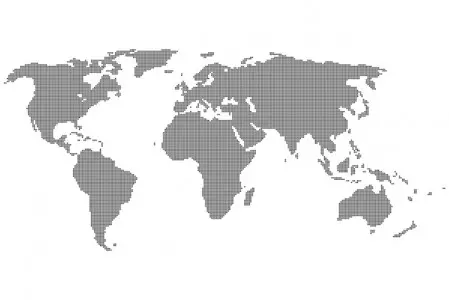Share on Social Media:
The Top 5 Countries that Import the Most Oranges
| Country | Orange Imports 2008 (metric tonnes) |
Orange Imports 2004 (metric tonnes) |
Percent Change | |
|---|---|---|---|---|
| 1 | Germany | 524,493 m/t | 591,513 m/t | - 11.33 % |
| 2 | Russian Federation | 501,983 m/t | 398,678 m/t | + 25.91 % |
| 3 | Netherlands | 485,178 m/t | 320,524 m/t | + 51.37 % |
| 4 | France | 423,274 m/t | 498,470 m/t | - 15.08 % |
| 5 | United Kingdom | 298,600 m/t | 357,990 m/t | - 16.59 % |
 Special Report
Special Report
- The states of São Paulo, Brazil and Florida of the United States together produce approximately 85 percent of the world's orange juice. Mexico and Cuba in the Western Hemisphere and Italy, Spain, and Greece in Europe also produce orange juice for export. Citrus fruits processing accounts for approximately one third of total citrus fruit production. More than 80% of it is orange processing, mostly for orange juice production. The major feature of the world market for orange juice is the geographical concentration of production. There are only two main players: the State of Florida in the United States and the State of São Paulo in Brazil. Production of orange juice between these two players makes up roughly 85 percent of the world market. The major difference between them is that Brazil exports 99 percent of its production while 90 percent of Florida's production is consumed domestically and only 10 percent is exported. International trade in orange juice takes place in the form of frozen concentrated orange juice (FCOJ), in order to reduce the volume used, so that storage and transportation costs are lower. The European Union is the largest importer of orange juice, accounting for over 80% of world orange juice imports. Most of imports by the EU and Japan come from Brazil. In North America, the United States and Canada consume mainly orange juice from Florida, while a small quantity of imports comes from Brazil.
- The United States is the largest processed orange consuming country in the world. Canada is also a large market; Canada's per capita consumption rivals that found in the United States. The other countries of the Western Hemisphere, however, do not have significant consumption of processed orange juice. Consumers in these countries buy oranges in fresh form and produce orange juice at home. Outside of the Western Hemisphere, the European Union is the other major orange juice-consuming region.
- Citrus fruits are the first fruit crop in international trade in terms of value. There are two clearly differentiated markets in the citrus sector: fresh citrus fruits market, with a predominance of oranges, and processed citrus products market, mainly orange juice. Oranges constitute the bulk of citrus fruit production, accounting for more than half of global citrus production in 2004. The rise in citrus production is mainly due to the increase in cultivation areas and the change in consumer preferences towards more health and convenience food consumption and the rising incomes.
- Most citrus fruits are grown in the Northern Hemisphere, accounting for around 70% of total citrus production. Main citrus fruit producing countries are Brazil, the Mediterranean countries, the United States (where citrus fruits for consumption as fresh fruit are mainly grown in California, Arizona and Texas, while most orange juice is produced in Florida) and China. These countries represent more than two thirds of global citrus fruit production. In the Mediterranean countries, citrus fruits are produced mainly for fresh fruit consumption. Spain is the leading producing country in the area. USA and Brazil are the leading producing countries of processed citrus fruits. In United States most of the production is consumed domestically. Actually, domestic consumption of orange juice is higher than US production.
- Citrus fruits are mainly consumed in developed countries, although consumption per capita is increasing in developing countries as levels of income increase. Exports of fresh citrus fruits represent roughly 10% of total citrus fruit production. The bulk of exports of fresh citrus fruits is situated in the Northern Hemisphere, accounting for around 62% of world fresh citrus fruit exports in 2003. The Mediterranean region plays a prominent role as fresh citrus exporter, providing nearly 60% of global fresh citrus fruits exports.
- Spreen, Thomas H. (2000). "The Free Trade Area of the Americas and the Market for Processed Orange Products" Retrieved November, 2010.
- United Nations Conference on Trade and Development. (2010). "Information on citrus fruit". Retrieved Nov, 2010.
Tags:
Crops, Imports & Exports
Sources: FAOSTAT data: 2008 (last accessed by Top 5 of Anything: Nov 28th, 2010)
List Notes: Imports are orange imports in metric tonnes for the year 2008. Please note: percent change is calculated for the years 2004 and 2008 exclusively and is not an aggregate.
Sources: FAOSTAT data: 2008 (last accessed by Top 5 of Anything: Nov 28th, 2010)
List Notes: Imports are orange imports in metric tonnes for the year 2008. Please note: percent change is calculated for the years 2004 and 2008 exclusively and is not an aggregate.

